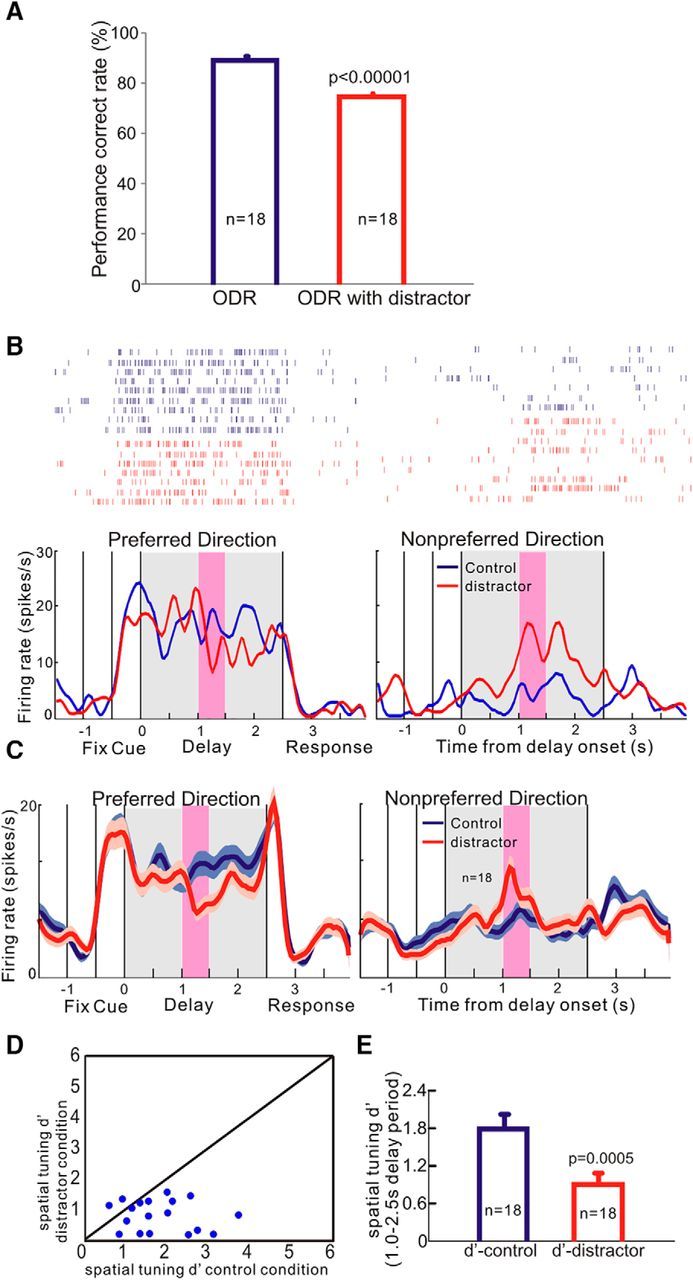Figure 4.

Effects of presenting distractors during the delay epoch on working memory performance and dlPFC delay cell firing. A, Presentation of distractors significantly impaired the accuracy of spatial working memory performance on the ODR task. Data are shown as mean ± SEM. ODR correct rate: 90 ± 2%; ODR with distractor correct rate: 75 ± 2%. B, Single-neuron example of the effects of distractor presentation on delay cell firing. Under control conditions (blue), there were no distractors and the neurons showed strong, spatially tuned persistent firing throughout the delay epoch. The presentation of a distractor during the delay period (pink shading) reduced the delay-related firing for the preferred direction and produced the distractor-related activation for the nonpreferred direction (red). C, Consistent effects of distractors on the firing of 18 delay cells. D, Scatter plot of d′ comparing each neuron's firing (1.0–2.5 s of delay period) for its preferred versus nonpreferred directions. E, Presentation of the distractor significantly decreased the spatial tuning of delay cell by decreasing the firing for the preferred direction and increasing the firing for the nonpreferred direction. Error bars indicate SEM.
